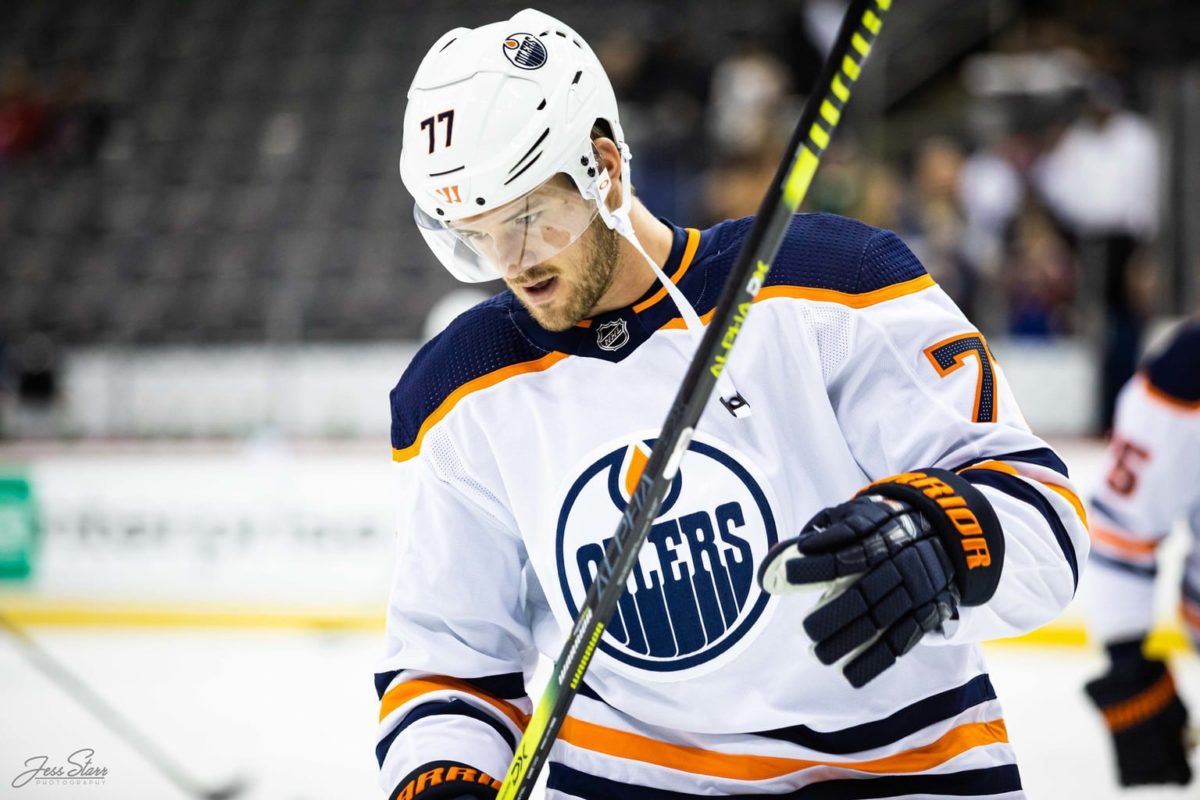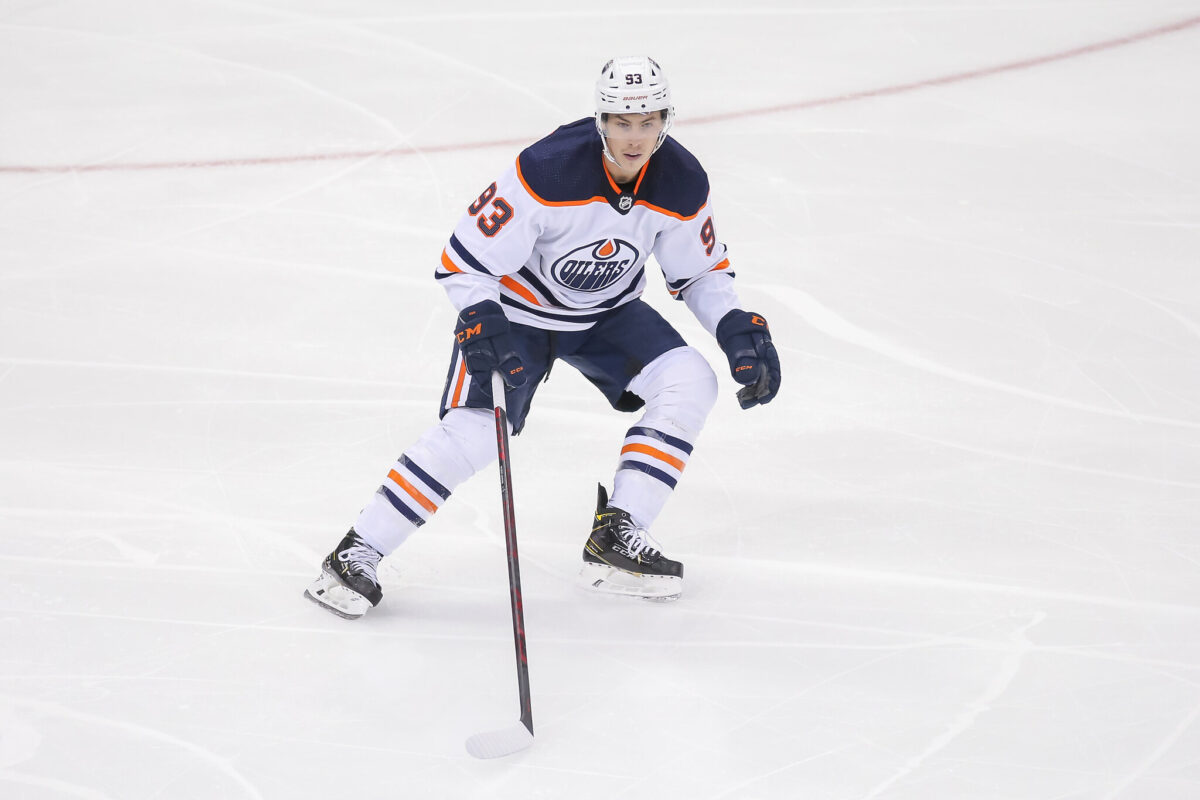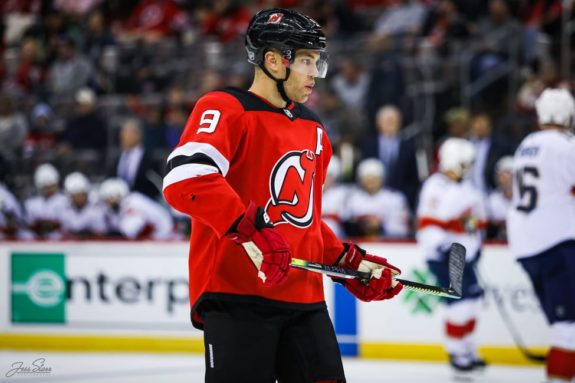The Edmonton Oilers stewed at the bottom of the standings for many years and missed the playoffs in 10 consecutive seasons. The 2015-16 season just so happened to be the final one and that young team had a ton of potential. Since the Oilers got many high picks over that span of 10 years, many, if not all of them were on the team by 2015-16 when the new era began.
The potential on that team was incredible and now only four of the main pieces remain. So, what happened? We’ll first take a look at the players the Oilers had, how old they were, and where they are now, shaping the team we see today.
- Cam Talbot (28 years old)
- Jordan Eberle (25)
- Justin Schultz (25)
- Taylor Hall (24)
- Nail Yakupov (22)
- Ryan Nugent-Hopkins (22)
- Oscar Klefbom (22)
- Darnell Nurse (20)
- Leon Draisaitl (20)
- Connor McDavid (19)
In total, that makes up two complete forward lines, three defencemen, and a starting goalie. Injuries, opportunity, and bad management saw this group slowly dwindle away. For better or for worse? That still remains to be seen. Every single player that isn’t currently on the Oilers has been traded, so the Oilers did it to themselves.
The Core 4 That Remained
Many are familiar with the four Oilers that remained and are heavily contributing to any success the team has had since. It just so happens that four of the five youngest at this time are the players that stuck around — McDavid, Draisaitl, Nurse, and Nugent-Hopkins. Klefbom would have still been contributing too if not for his health. While three of them are on team-friendly deals, Nurse is not, but the timing couldn’t have been worse for the Oilers regarding Klefbom’s injury and a bridge deal signed by Nurse.

The Klefbom situation really threw the Oilers off because they had two solid top-four defencemen that were drafted and developed on the left side. Klefbom was actually ahead on the depth chart over Nurse, and I believe it could have stayed that way up until now when Klefbom’s contract expires. Not only was his contract very fair at $4.167 million average annual value (AAV), it would have saved the Oilers a lot of headaches trying to find replacements. They went through Duncan Keith and a number of rookies in 2021-22 while having to then pay Nurse $9.25 million AAV since he was the only option (from “Lowetide: Can Oilers’ Darnell Nurse live up to new contract?”, The Athletic, July 27, 2022). When Klefbom went down to injury, it forced Nurse into the top power-play role and saw him get a ton of minutes at even strength, shorthanded, and in overtime as well. Why wouldn’t a number one defenceman who is used a ton in every situation think he deserves top dollar on a contract extension?
Related: Oilers Can Take Advantage of Blue Jackets’ Defensive Logjam
Nugent-Hopkins is the most loyal player the Oilers have as he’s been there the longest and suffered through the most loss. He took a very team-friendly deal to stay in Edmonton for his career and while other players who contributed less to their teams are asking for north of $9 million AAV, he settled on $5.125 million AAV. Reliable and consistent at both ends of the ice and on special teams, the Oilers are fortunate to see the offensive production rise higher than it has before in his career.

There’s not much more I can say about McDavid and Draisaitl other than the Oilers would be nowhere close to where they are without the two. They are both other-worldly talents who lead the league in scoring every season and clean up the NHL Awards. They are regular-season and playoff performers who can each score over 50 goals and well over 100 points each season. Both are arguably in the early stages of their primes and were only getting started in 2015-16.
The Falls and the Trades
As it was a season where the Oilers weren’t going to make the playoffs again in 2015-16, they decided to sell at the trade deadline, getting a weak return for a young defenceman with a lot of offensive potential. In his fourth season, Schultz wasn’t having the best offensive year and the Oilers traded him for a third-round pick. He might not be great defensively, but he proved the Oilers wrong with big contributions in back-to-back Stanley Cup runs starting that season and a 51-point performance in 2016-17.
After the 2015-16 season, a span of a couple months turned the tides of this young Oilers team. Hall was first traded to the New Jersey Devils in exchange for Adam Larsson in a 1-for-1 trade. That October, Yakupov was then traded to the St. Louis Blues for a third round pick and Zachary Pochiro. This was nearly the end for Yakupov in the NHL, but at 22 years of age, there was still potential and hope there. Hall on the other hand would go and win the Hart Trophy in New Jersey in his second season with his new team. Larsson is the same age as Hall and was drafted three picks after him, but they were completely different players and there wasn’t the same skill level in each of them.

Eberle remained for just one more season and everything changed when he recorded just two assists in 13 playoff games in the Oilers’ first playoff run. Although trading Eberle fetched the Oilers an even younger Ryan Strome with potential, it didn’t work out in Edmonton. Eberle has since become a highly effective playoff performer in his four appearances since. Seeing as he earns $5.5 million AAV, would the Oilers rather him or Zach Hyman/Evander Kane on the roster for the same or a lower cap hit? I think the latter.
Talbot was the last to go of this group and he got traded to the Philadelphia Flyers at the 2019 Trade Deadline for Anthony Stolarz who the Oilers got two starts out of and lost. Talbot had arguably the best single-season performance from an Oilers goalie in their history with 42 wins in 2016-17. The Oilers have struggled to find consistent goaltending since, even this season with Jack Campbell, the expected starter, struggling big time in his first season.
What Would Have Been Different?
I’ve already covered how Nurse wouldn’t have taken over an even larger responsibility on defence in Klefbom stayed healthy and there wouldn’t have been years of struggle trying to find the right pieces. The same goes with the lack of high-end wingers and starting goaltenders after players like Hall, Eberle, and Talbot were dealt. Teams change over time and the Oilers are looking like a competitive team that would have been much different if more of this young 2015-16 core who were oozing with potential remained mostly intact. I think it was for the worse early on, but as Ken Holland shapes the current Oilers, it’s looking like it was for the better.
